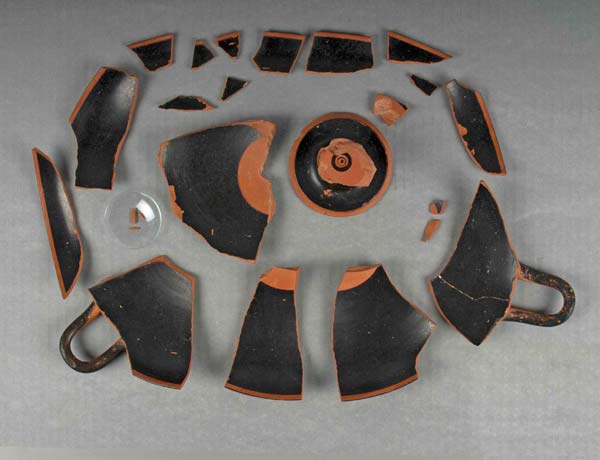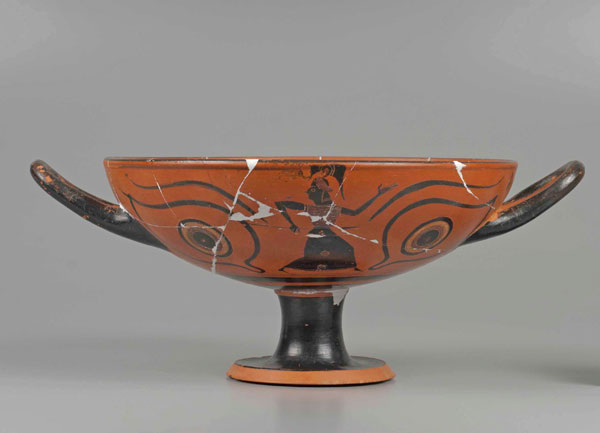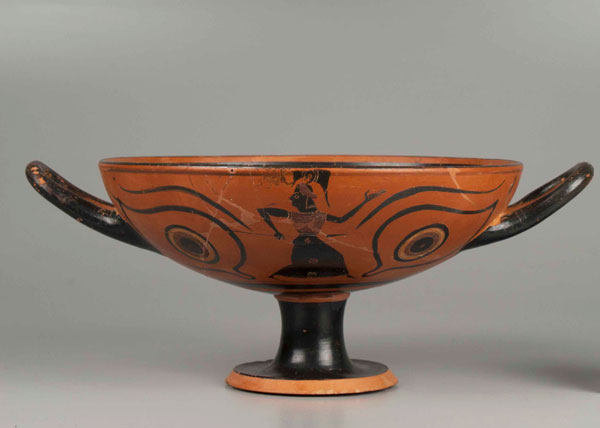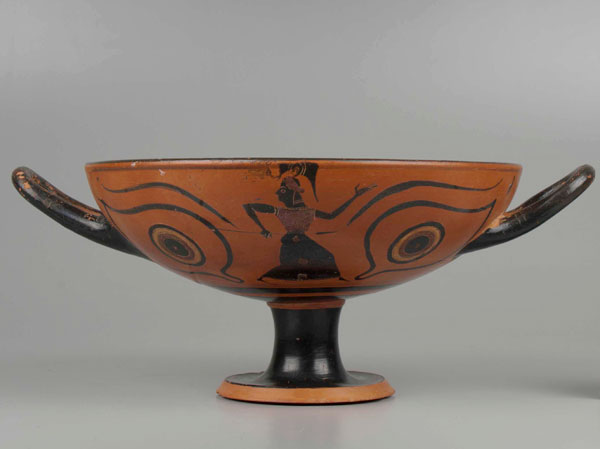Like most objects in the Harvard Art Museums collections that are thousands of years old—especially those once used in daily life—this terracotta black-figure kylix has needed numerous repairs. The drinking vessel, created around 530 BCE, is an “eye cup,” which means it reveals a pair of eyes when raised to a person’s lips. The whole cup appears as a mask: the goddess Athena’s skirt painted on the cup’s bowl doubles as a nose, the kylix’s round foot appears as a mouth, and its handles as ears.
At some point in the vessel’s life it broke into many pieces, and many conservators over the years have disassembled and reassembled it. To get this object ready for display in our new galleries, Susan Costello, Projects Conservator in our Objects Lab, needed to adjust these former repairs. The ceramic pieces of the cup were poorly aligned, with gaps and steps between various fragments. Costello took the cup apart, removing all old adhesive and fill material. She then reassembled the kylix, filling losses and painting fills.
See the remarkable transformation of this cup in the pictures posted above.






